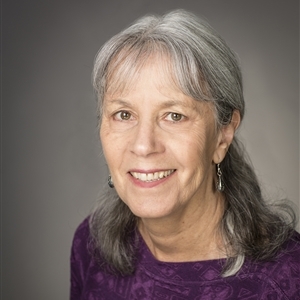'Reno at the Crossroads': A University Libraries exhibit in honor of 150 years of Reno history
'Reno at the Crossroads' exhibit at the Knowledge Center spans all five floors of the building and tells 150 years of Reno history
If you've been inside the Mathewson-IGT Knowledge Center lately, you may have wondered why there's a nearly full-size replica of the historic Reno Arch in the main floor atrium. Like the original arch downtown, it's a symbol of welcome. On May 9, Reno will turn 150, and this momentous occasion has prompted the Special Collections and University Archives Department of the University Libraries to launch a major exhibit in honor of the city's sesquicentennial.
Spanning all five floors of the building, "Reno at the Crossroads: A Sesquicentennial Exhibit, 1868-2018" explores Reno's colorful evolution from its founding in 1868 to the present through photographs, maps, documents, and objects. The scale of this exhibit provides us with the exciting opportunity to expose people at the University and throughout the community to many sides of Reno they might not have known, and encourage them to learn more. Most of it can be viewed during the open hours of the Mathewson-IGT Knowledge Center. The Special Collections exhibit room on the third floor, featuring a beautiful showgirl costume from the collection of Karen Burns as well as many other items illustrating the story of Reno tourism, is open 9-5, Monday through Friday. The exhibit will remain in the Knowledge Center throughout Reno's sesquicentennial year.
An exhibit this size is a major undertaking for library staff. This one was made possible with a designated grant from IGT, which allowed us to bring in the talents and knowledge of a guest curator and an exhibit designer. Dr. Alicia Barber, a public historian, scholar, and author of the book Reno's Big Gamble: Image and Reputation in the Biggest Little City, serves as the exhibit curator. She developed the vision for the entire exhibit and selected materials, mostly from Special Collections, to illustrate Reno's development in six thematic areas:
· The city's relationship to the environment (5th floor)
· Communities and cultures in Reno (4th floor)
· Reno's economy (3rd floor)
· Reno's status as major transportation crossroads (2nd/main floor)
· Reno's growth as a university town (1st floor, Whittemore gallery, outside the Wells Fargo auditorium)
· Visions of Reno's future (1st floor, Whittemore gallery, ramp)
Alicia also researched and wrote all the text that you'll see throughout the exhibit, from large interpretive panels to more than 100 detailed captions describing the enlarged photographs and maps on the gallery walls, and the various items featured in display cases. Peggy McDonald, the exhibit designer, brought her education, experience and talents as a theater set designer to the dozens of exhibit spaces in the library. She applied her design and installation skills to the hundreds of items in the exhibit, and helped with research. The historically accurate replica of Reno's first "Biggest Little City" arch was her creation, with fabrication assistance from her husband, Dennis Montgomery.
Neither Peggy nor Alicia are strangers to the library or to the University. Peggy was the co-curator for Reflections on Pyramid Lake, another building-wide exhibit sponsored by IGT, and the SNOW exhibit on floors 1-3 a year ago. She was the sole curator of the Special Collections exhibit commemorating the 400th anniversary of Shakespeare's death, Upstart Crow. She has brought her creativity and design talents to two other library exhibits, Nevada Schools: Staking a Claim on Education and Doom Towns: The People and Landscapes of Atomic Testing. With her deep Reno roots and vast network of contacts, Peggy always contributes great resources to library exhibits. For Reno at the Crossroads, she loaned her family's beautiful antique slot machine for the Special Collections exhibit room.
Alicia taught in the University's Core Humanities Program and History Department for ten years and directed the University of Nevada Oral History Program for four years. She has played a pivotal role in two major digital projects with Special Collections:
· Reno Historical, an award-winning website and app for mobile devices, launched in 2014 with the help of grants from Nevada Humanities and the Institute for Museum and Library Services (IMLS). Alicia serves as the editor for the project.
· Illuminating Reno's Divorce History, a year-long project funded by IMLS that provides online access to over 1,000 items from Special Collections, completed in the summer of 2015 and chosen as one of "Five Digital History Projects that Dazzled Us in 2015" by Slate Magazine.
Alicia also partners with Special Collections through her bi-monthly feature for KUNR 88.7 FM, Reno Public Radio, "Time and Place." The segment regularly features excerpts from the archive of the University of Nevada Oral History Program, a collection of interviews and other materials dating back to 1964 that Special Collections received in 2013.
Collaboration is truly at the heart of Reno at the Crossroads. The exhibit was enriched by the graphic design contributions of the library's designer, Chris Holloman; and the professional-level printing services at @One allowed us to blanket the walls of the Knowledge Center with spectacular images of Reno's fascinating 150-year history. As for myself, I spent countless hours preparing images for printing and paving the institutional road for my collaborators.





